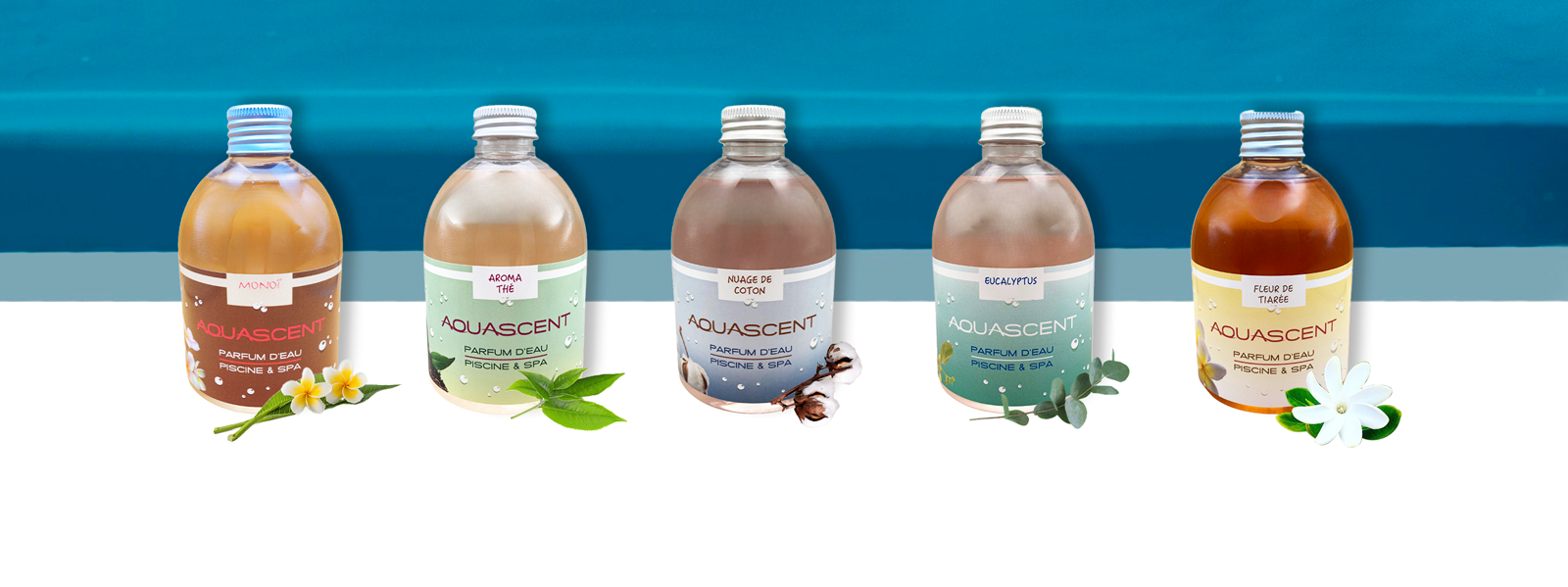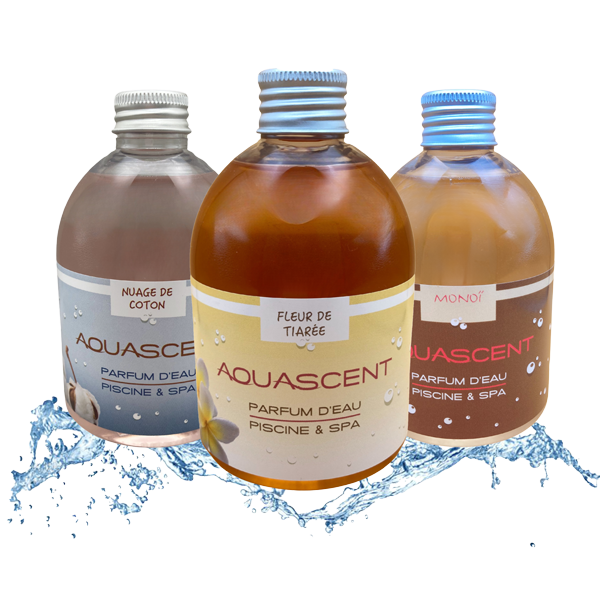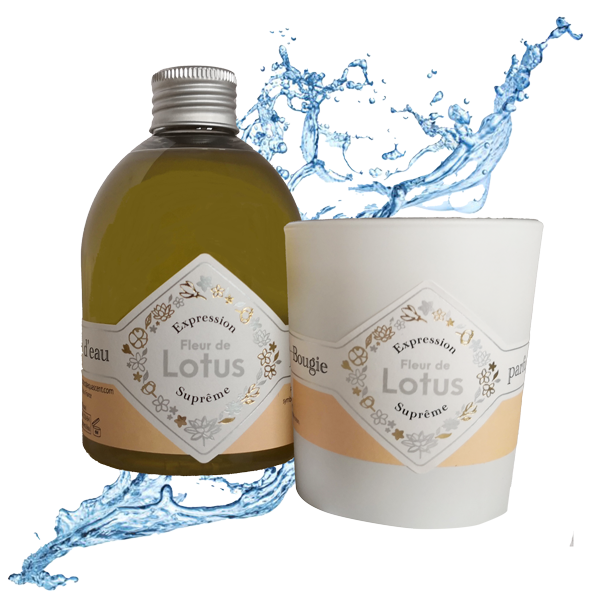L’eau est un bien précieux nos parfums AquaScent préservent sa limpidité
Les parfums d’eau AquaScent® pour Spa et Piscines sont le fruit de longues recherches réalisées par un Docteur en Pharmacie, soucieux de conjuguer confort et santé des baigneurs et plaisir d’une eau subtilement parfumée.
Les fragrances viennent de Grasse, capitale mondiale de la parfumerie et sont spécialement réalisées pour AquaScent®.
Tous nos parfums sont fabriqués en France, en Charente-Maritime.
La qualité des matières premières est associée à une véritable technologie qui place AquaScent® comme le spécialiste des parfumeurs en milieu aqueux.
Sans eau ni alcool, la rémanence olfactive des parfums d’Eau AquaScent® est largement reconnue.
Parce que l’eau est une ressource précieuse, AquaScent® préserve sa limpidité. Nos parfums ne moussent pas, ne sont pas gras et sont sans effet sur les équipements des bassins.

Notre gamme de Parfums
Une gamme élaborée pour toutes les envies

LES CLASSIQUES
Un large choix de senteurs pour créer l’ambiance de votre baignade dans votre Spa ou votre Piscine

LES SUPRÊMES
Parfum d’eau et bougie assortie haut de gamme spécialement conçus pour les Spas
